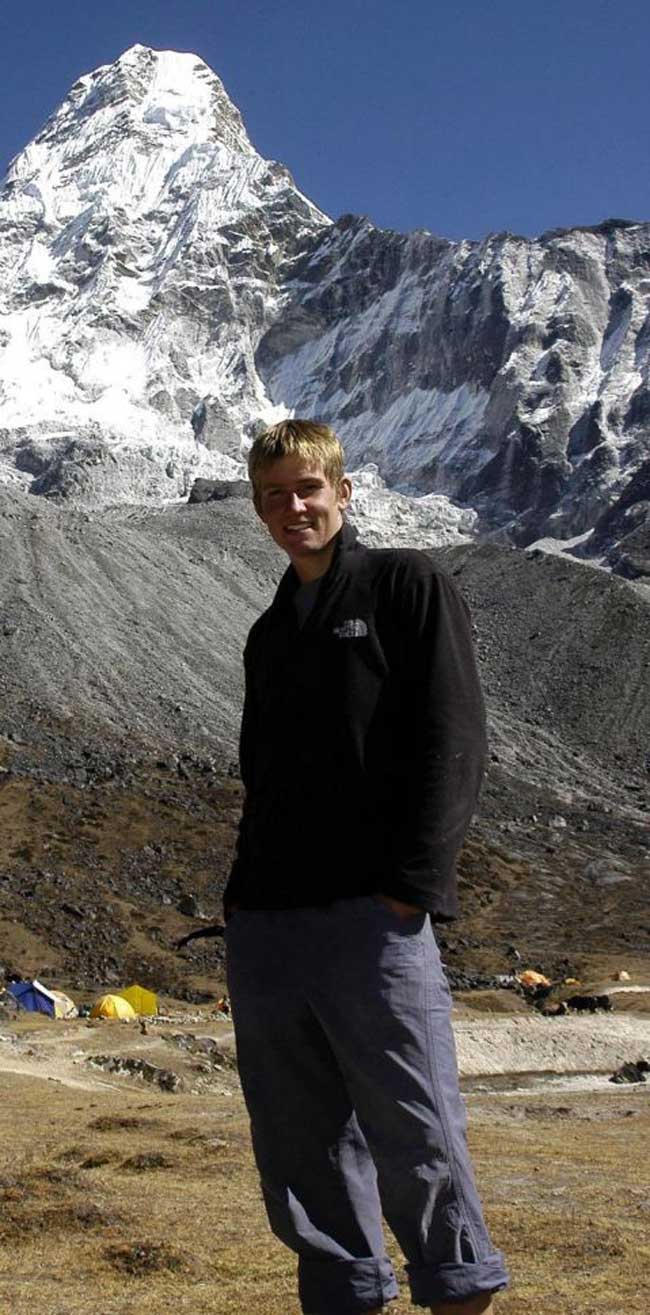Teen Everest conqueror dies in Alpine ice avalanche
British climbing hero and friend killed by fall of debris as they abseil near Chamonix in France

Your support helps us to tell the story
From reproductive rights to climate change to Big Tech, The Independent is on the ground when the story is developing. Whether it's investigating the financials of Elon Musk's pro-Trump PAC or producing our latest documentary, 'The A Word', which shines a light on the American women fighting for reproductive rights, we know how important it is to parse out the facts from the messaging.
At such a critical moment in US history, we need reporters on the ground. Your donation allows us to keep sending journalists to speak to both sides of the story.
The Independent is trusted by Americans across the entire political spectrum. And unlike many other quality news outlets, we choose not to lock Americans out of our reporting and analysis with paywalls. We believe quality journalism should be available to everyone, paid for by those who can afford it.
Your support makes all the difference.The youngest Briton to climb Everest has died in an avalanche while ice-climbing in the French Alps. Rob Gauntlett, who reached the mountain's 8,840m summit in May 2006, just after he turned 19, was killed yesterday, along with a close friend.
The pair were climbing near the mountain sports mecca of Chamonix. French rescue services in HauteSavoie, the area around Chamonix, said yesterday that rising temperatures had triggered snow and ice avalanches in the region. The pair were abseiling off their climbing route at Sixt-Fer-à-Cheval when they were hit by debris from an avalanche, local guides said. Two guides native to the area were killed by falling ice in the same area only last week.
The second man has not been named, although his family have been informed of his death. Speaking last night from Mr Gauntlett's family home in Petworth, West Sussex, his mother, Nicola, said: "At the moment we don't know exactly what happened, but there was obviously a big fall and they both died. We are all just devastated. He's far too young to die. We had spoken about somethinglike this happening only recently. We can only take consolation that he died doing something that he loved." Mr Gauntlett, now 21, and his friend had gone to Chamonix on 2 January and were due to return to the UK on Wednesday. Mrs Gauntlett said she and her husband, David, intended to leave for France today.
Mr Gauntlett and his best friend, James Hooper, of Wellington, Somerset, first set their sights on climbing Everest in 2003, while studying for their GCSEs at Christ's Hospital School in Horsham, Sussex. Undaunted by their total lack of climbing experience, they cut their teeth on routes in the UK, the Alps and in the greater ranges before climbing Everest by the same route taken by Edmund Hillary and Tenzing Norgay in 1953.
Everest by the 1953 route is regarded by mountaineers as a technically easy climb, despite the extreme altitude, but the pair had trained by attempting far more demanding peaks.
They were both aged just 17 when they set out on their first high-altitude expedition – an attempt on Spantik, a 7,032m peak in Pakistan, and made it up to 6,000m before deteriorating weather forced their retreat. Mr Gauntlett later said the greatest challenge of the trip had been persuading their parents to let them go in the first place. In 2005, they summitted 6,856m Ama Dablam, a distinctive tooth-shaped mountain in the Khumbu region of Nepal which lies on the trek into Everest base camp. After Everest, Mr Gauntlett and Mr Hooper continued what was already a spectacular gap year by travelling between the Earth's magnetic poles using only human or natural power. Having skied over sea ice for several weeks before switching to Inuit dog-sleds, Mr Gauntlett nearly died when he fell through the ice. At the edge of the polar ice cap, they met a yacht in which they sailed to New York before cycling 5,500 miles south to Panama City.
They sailed to Ecuador before getting back on their bikes for the ride down to the tip of South America. The final leg of the journey was a crossing of the notoriously dangerous Southern Ocean to Antarctica and the South Pole. They completed the 26,000-mile trip on 10 October last year, one year, one month and one day after leaving the North Pole, and the adventure won them the accolade of National Geographic 2008 Adventurers of the Year.
Also, yesterday, a British climber died in the Andes. Michael Freeman, 42, was believed to have had a heart attack as he neared the summit of Aconcagua, a 6,700m peak in Argentina. Mr Freemanwas the fourth person to die on Aconcagua so far this year. A German climber died on 3 January and, on Wednesday, snow dumped in a blizzard triggered an avalanche which killed an Italian climber and fatally injured her Argentinian guide.
Join our commenting forum
Join thought-provoking conversations, follow other Independent readers and see their replies
Comments